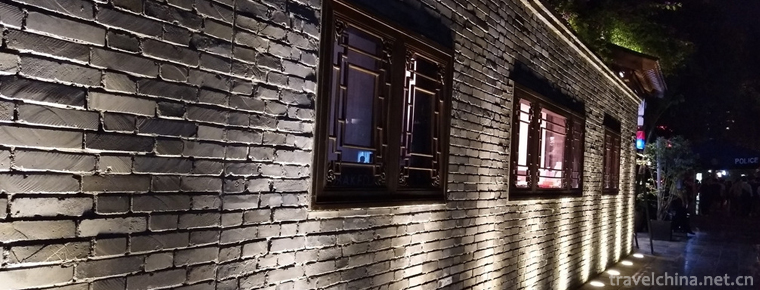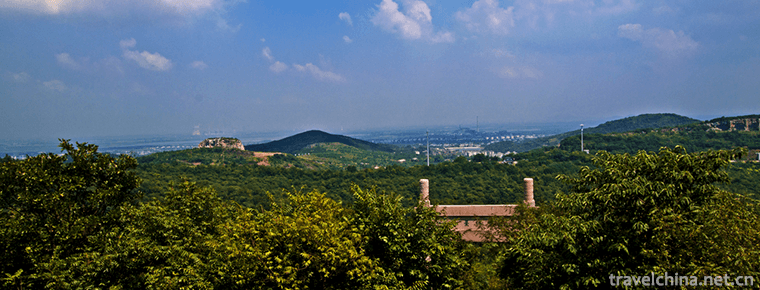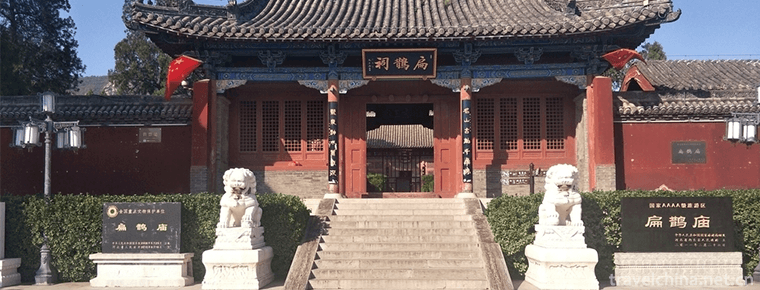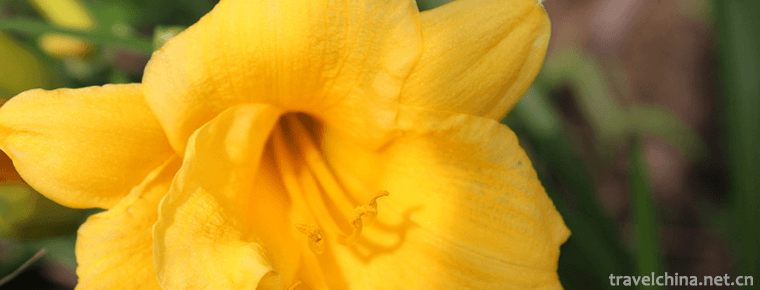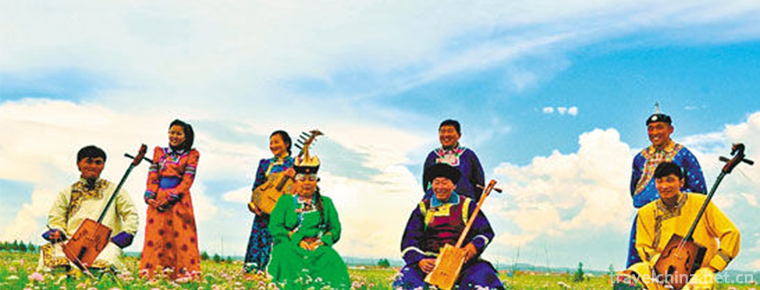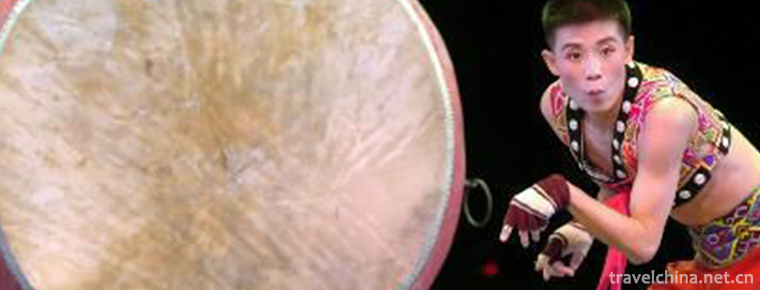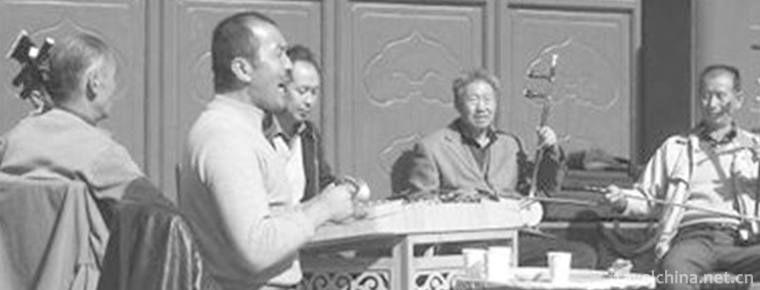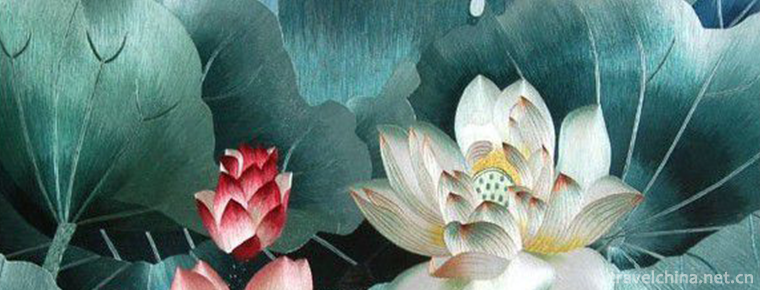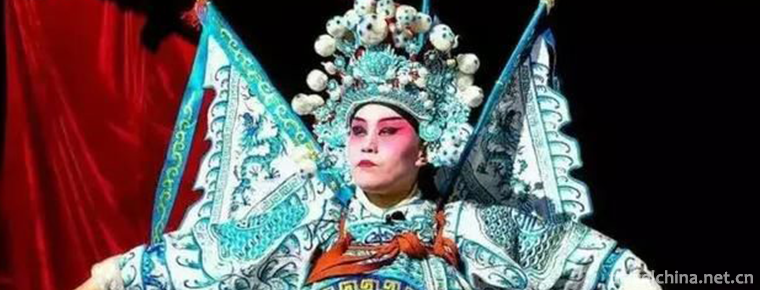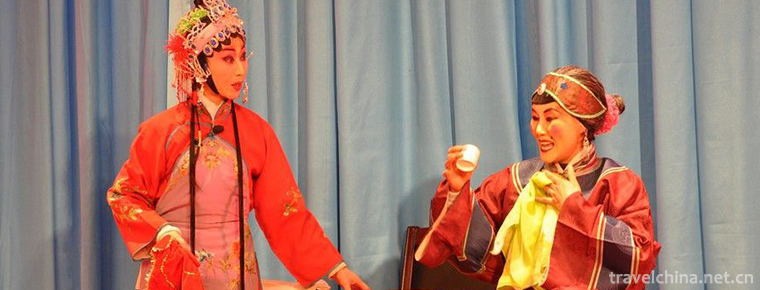Acrobatics in Dongbeizhuang
Acrobatics in Dongbeizhuang
Dongbeizhuang acrobatics is a traditional folk acrobatics in Puyang City. Dongbeizhuang, Yuecun Township in Puyang City, is a pearl in the vast plain of northern Henan Province. It is also known as the north and South hometown of Chinese acrobatics along with Wuqiao Bridge in Hebei Province. The acrobatics exercise in this village has a history of more than 300 years. The mid-Qing Dynasty entered its heyday. Among the thirteen professional acrobatics troupes, Qiaojiaqing troupe is the most famous. He led a group of more than 50 performers who performed in Russia, Japan, Korea, India and the Philippines.
On June 7, 2008, the "Dongbeizhuang acrobatics" declared by Puyang City, Henan Province, was approved by the State Council to be included in the second batch of national intangible cultural heritage lists. Heritage serial number: 821 VI-49.
Historical source
Document record
The Wei Shu quoted by Pei Song's Notes to the Records of the Three Kingdoms, Wei Zhi, Zhen Houzhuan, records the story of Cao Cao's daughter-in-law watching folk circus when she was eight years old. Before the Ming Dynasty, the original name of Dongbeizhuang was Lu Lou, which was the home of Lu Bu, a character of the Three Kingdoms.
According to historical records, Dongbeizhuang began in the late Tang Dynasty and early Song Dynasty, and was named for its location in the northeast direction of "Sangjian Pushang". As early as the late Yuan and early Ming Dynasty, there were many "dry acrobatics" in Dongbeizhuang. In the mid-Qing Dynasty, there were 13 acrobatics classes in Dongbeizhuang, the most famous of which was "Liu Jiaban" at the end of Qing Dynasty. During the dynasty, 80% of the village's acrobatics artists were engaged in acrobatics. At that time, Qiao Jiaban was well-known.
Guangxu years
During Guangxu's reign, Jon Hai, an acrobatic performer in Northeast China, developed his own skills. He had three sons, the eldest, Qiao Jinmei, the second, Qiao Jinmei and the third, Qiao Jinfang. Jon Hai's three sons were the main actors of Qiao Jiaban at that time. The central circle performs all kinds of extraordinary activities.
With the passage of time, the way of performance of "Qiao Jiaban" has changed from "Mingchangzi" to "cloth tent". With special stage and fixed auditorium, artists have increased from several original people to dozens of people, and also increased the performance of animal training. At that time, "Qiao Jiaban" was only a folk performing group. What really made "Qiao Jiaban" have national and even international influence was that. Qiao Jinmei's son, Qiao Zhiqing (1875-1950). During a performance out, George Qing met and fell in love with Zhang Su, daughter of Zhangjiaban, a famous class leader in Wuqiao, Hebei Province, and later became the best of Qin and Jin Dynasties. The Qiao couple absorbed the essence of the two acrobatics and integrated Wushu, Qigong, animal training, horsemanship and magic in acrobatics. On the basis of the original class club, they formed a group with the following elements: A considerable scale of Qiao's professional class, updating acrobatics programs, changing the content of the performance, makes the "Qiao's class" more famous.
Qiao family class absorbed the essence of traditional martial arts and folk arts, and trained martial arts, qigong, horse racing, juggling and color tricks.
Due to its growing reputation, Qiao Jiaban also performed in the palace many times. Under the leadership of George Qing, this acrobatic group with 50 artists has performed in more than 20 countries, such as Japan, India, Russia and Korea. Because of the incompetence of the Qing government, George Qing and other people are often angry abroad. Once in Japan, some people criticized the acrobatic troupe, degraded the personality of the performers and became big. After scolding the Chinese, George immediately appealed to the Japanese government. In court, he reasonably tried to make the irrational Japanese bow his head and apologize. At that time, the incident caused a sensation in the government, and Qiao Jiaban was well-known and acrobatics was also called "bone" art. When returning home, the Qing government held a solemn welcome ceremony for Qiao Jiaban. Empress Dowager Cixi watched Qiao Jiaban. After the performance of "Home Class", he praised it and gave "Qiao Class" two longevity dragon lanterns and a pot to show his skill.
Republic of China
During the Republic of China, Qiao Jiaban was well-known both in the north and the south of the Yangtze River and inside and outside the Great Wall. The 35-episode TV series "Acrobatic Northeast Villa" was produced on the basis of Qiao Jiaban's characters and was filmed live in Puyang Northeast Villa.
On the eve of liberation, there were thirteen big acrobatics in Puyang. Qiao Zhiqing's granddaughter Yuhong, Shuilian and Shuixiang were all famous actors. In 1958, the classes were merged into two acrobatics troupes, named as "Red Flag Acrobatics Troupe", and Li Jinfa, the head of the troupe, Guyushan, and Cui Shoutang, the deputy head of the troupe, were famous artists. In 1960, the troupe belonged to Anyang area and the two troupes were renamed "Puyang County Acrobatics Troupe Up to now.
After the founding of PRC
The Yellow River is known as "iron head and copper tail bean curd waist". Puyang is located in the middle of the Yellow River. Nine disasters occurred in the past ten years. Puyang acrobatics was the means of making a living in the Yellow River Pan Area at the beginning. It has ended the history of "running horses and selling leisure". In the process of labor production and life, acrobatics has been condensed into traditional culture and sublimated into traditional folk art for the rest of the world to entertain and appreciate.
After the founding of the People's Republic of China in 1949, the acrobatics enthusiasm of Dongbeizhuang people was higher and their skills were more exquisite. The acrobatics in this village went to all parts of the country and became the backbone of the regular acrobatics groups in various provinces and cities. Many people became the leaders. For example, "Qiaojiaban" became two acrobatics troupes in Puyang, and "Li Jiaban" became an Acrobatics Troupe in Anyang. Sichuan Acrobatics Troupe after reorganization. The original class is all one of the "Qiao family class" led by Qiao Guilin in Dongbeizhuang. Liu Fang of Sichuan Wanxian Acrobatic Troupe, Liu Huafang of Wuhan Acrobatic Troupe, Liu Jincai of Xinxiang Acrobatic Troupe, Qiao Sanmo of Tibetan Acrobatic Troupe, Liu Fulu of Chongqing Acrobatic Troupe, Qiao Changshun of Shanxi Acrobatic Troupe, Liu Hui of Gansu Acrobatic Troupe and Liu Chunshan of Hebei Acrobatic Troupe are all from Dongbei In addition, the village has also trained many famous national acrobats. For example, Liu Xiangbao, Li Tieniu, Liu Xiangzhen of Shenyang Military Acrobatic Troupe, Liu Lanxiang of Zhengzhou Acrobatic Troupe, Liu Yunxiang, Qiao Maiyuan of Liu Xiang Acrobatic Troupe, Liu Jingmei of Chongqing Acrobatic Troupe, etc., often give classes or tour performances at home and abroad.
After liberation, the acrobatic force of the village became the main foundation of Puyang Acrobatic Troupe and Henan Acrobatic Troupe. The acrobatics with strong local characteristics were deeply loved by the masses of urban and rural areas. The programs of light pedal, top bowl, flying fork and so on, which participated in national and provincial competitions, were well received. Among them, "Double-deck Dangling Board" won the first prize of Henan Acrobatic Competition, and the second bronze prize and day of the national acrobatics competition. In July 1989, the Chinese Acrobatic Troupe won the first prize in the Paris Art Festival competition. In the fourth national juvenile Acrobatics Competition held in 2002, the women's row chairs won the gold prize and the ladder won the silver prize. According to statistics, the performers from the Northeast Zhuang nationality have won the national and world-class acrobatics in the past 10 years. There are 37 trophies (medals).
Inheritance and protection
In 1969, Xinhua journalist Wang Weijin interviewed Dongbeizhuang village and published a news report entitled "The Township of Chinese Acrobatics - Dongbeizhuang" in People's Daily and Henan Daily. In March 1981, the CCTV production team also made live videos in the village and reported in prime time. In recent years, the major central media and even foreign media have visited Dongbeizhuang several times. Austrian National Television has visited Dongbeizhuang twice to find the birthplace of acrobatics in the Central Plains. It highly appraised the rich connotation of the acrobatics art in Dongbeizhuang. The production of "Dongbeizhuang Acrobatics Album" brought back to China and caused a sensation. On September 29, 2000, Mayor Merry Ann of Asiberton, New Zealand Durson visited Dongbeizhuang and left a message in person: The program you performed was wonderful, and you deeply felt the endless charm of Dongbeizhuang acrobatics art. It was wonderful! At the APEC conference in Shanghai in 2001, the host prepared a wonderful literary and artistic program for the world's leaders. During the performance, President Bush was ready to retire halfway. At that time, the staff around him quietly told him that he would perform Chinese acrobatics next. Bush took his seat again. He was happy with the heads of more than 100 countries and regions in the world. Enjoyed the wonderful acrobatic show. The acrobatic name is Straw Hat. It was performed by a group of naive, lively and lovely boys from Puyang Acrobatic Troupe. This program has been reserved in Orlando Disneyland for more than 10 years.
"Where there are acrobatics, there are Puyang people", and Puyang acrobatics is famous all over the world. The old people in Dongbeizhuang can tell the names of half the leaders and famous characters of Chinese acrobatics troupe, such as Liu Fang of Sichuan Wanxian Acrobatics Troupe, Liu Fulu of Wuhan Acrobatics Troupe, Qiao Changshun of Shanxi Acrobatics Troupe, Liu Quan of Gansu Acrobatics Troupe, Liu Chunshan of Hebei Acrobatics Troupe, Li Tieniu of Guangdong Acrobatics Troupe Some Puyang people spread acrobatics all over the world.
Inheritance status
Qiao Shuichun is the fifth generation of "Qiao Jiaban". Now he is 75 years old. From his appearance, he is an authentic old farmer. He has performed acrobatics all his life. His slender legs are obviously inconvenient to move. His wife, Li Suyun, tells us, "All of them fall sick when they are young. They practice acrobatics bitterly. The ice and snow sweep out an open field and play on it naked." Roll and turn somersaults. In old age, it hurts when you catch a cold and get hurt."Qiao Shuichun also said,"Yeah, I can't play this year. Last year I could stand upside down."He was full of emotion when talking about acrobatics.
Qiao Shuichun's home has lost sight of the splendor of Qiao's old house. Qiao's old house was burned by a Japanese fire during the Anti-Japanese War. The two longevity dragon lanterns given by Empress Dowager Cixi were also burned to ashes in the fire. Madame Li Suyun put forward an old pot from the house and said to us, "When the dragon lantern is burned, there is only the imperial pot left." The glaze of the pot is smooth, the pattern is clear, the color is bright, and the bottom of the pot has the stamp of "Tongzhi tribute system".

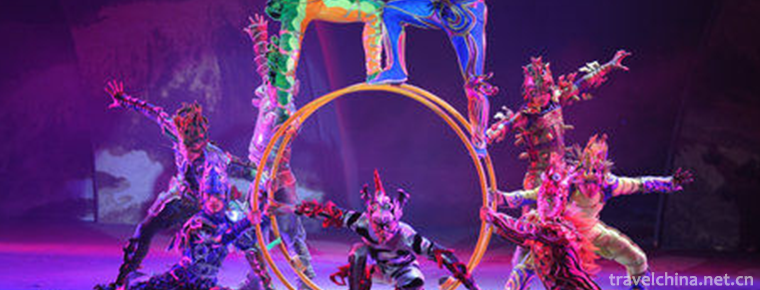
Acrobatics in Dongbeizhuang
-
Kuan and Zhai Alley
No. 127, ChangShun Street, Qingyang, Chengdu, Sichuan, China
Views: 267 Time 2018-09-29 -
Bagong Mountain Tourist Scenic Area
Since 2001, Bagongshan Scenic Area has listed Bagongshan National Geopark, Bagongshan National Forest Park and Bagongshan National AAAA Tourist Area successively. Bagong Mountain is a famous historica
Views: 160 Time 2018-12-23 -
Bian Que Temple Tourist Area
Bian Que Temple, also known as Bian Que Temple, is situated at the foot of Que Mountain, 26 kilometers west of Neiqiu County Town. It is an ancient building group to worship and worship the Chinese me
Views: 122 Time 2019-01-03 -
Hainan Tropical Wildlife Park and Botanical Garden
Hainan Tropical Wildlife and Botanical Garden is a national AAAA-level tourist attraction with the theme of popular science exposition, conservation and reproduction, sightseeing, leisure and vacation
Views: 270 Time 2019-01-13 -
Mongolian Folk Songs
Mongolian folk songs are mainly divided into two categories: ritual songs and pastoral songs. Mongolian folk songs are famous for their magnificent voices and melodious tunes.
Views: 108 Time 2019-06-04 -
Folk dance
Generally speaking, it refers to the form of dance which is produced and spread among the people, restricted by folk culture, improvised performance but relatively stable in style, and with self-enter
Views: 246 Time 2019-06-05 -
Qinghai Pingxian
Qinghai Pingxian, also known as Xining Fu Zi, is one of the new local folk songs in Qinghai Province. It is popular in Xining, Huangzhong, Datong and Mutual Aid Agricultural Areas. Qupai is known
Views: 215 Time 2019-06-10 -
Shu embroidery
Shu embroidery, also known as Sichuan embroidery, is as famous as Su embroidery, Hunan embroidery and Guangdong embroidery. It is one of the four famous embroidery in China. It is a traditional Chines
Views: 418 Time 2019-06-15 -
Tongzhou Bangzi
Tongzhou Bangzi originated in more than ten counties of Dali (Gutongzhou) Center in the east of Guanzhong, Shaanxi Province. Accompanied instruments, besides drum beating, are also named for their str
Views: 110 Time 2019-06-21 -
Xilu Bangkok
Xilu Bangzi a Xilu Bangzi is an ancient traditional opera. Now the embryonic form of Hebei Bangzi was formed in Qingdaoguang period. Its predecessor is Shanshan-Shaanxi Bangzi, which was introduced in
Views: 208 Time 2019-07-01 -
Revenue and expenditure of Mianyang
In 2019, Mianyang's general public budget revenue will reach 13.115 billion yuan, an increase of 5.3%; general public budget expenditure will reach 45.334 billion yuan, an increase of 11.1%. The balance of RMB deposits in financial institutions was
Views: 188 Time 2020-12-14 -
Nanchong landform
Nanchong terrain inclines from north to south, with an altitude of 256-888.8 meters. The main geomorphic types are hills, and 1 / 3 of them are high hills and low mountains, middle hills and valleys, and low hills and dams. The geomorphic types of the whole city
Views: 336 Time 2020-12-17
